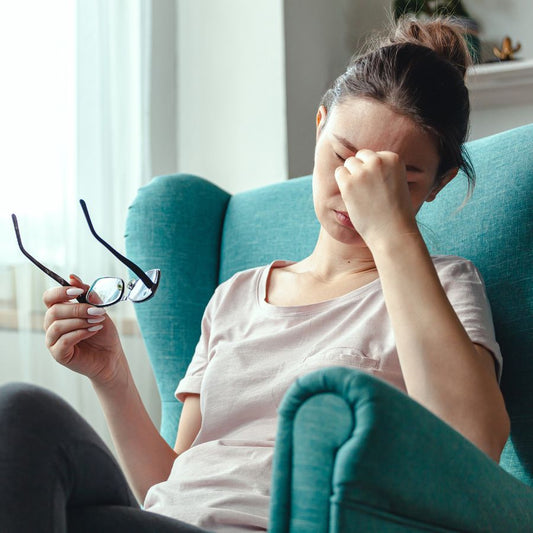During the first few weeks after giving birth, vaginal bleeding and discharge occur, which help the uterus (womb) to return to normal. This is why post partum pads are a must-have for new mums. How do you choose the right ones and which features should you look out for? Read on.
What are maternity pads?
We know that after childbirth it takes a while to get "back to normal". How long depends entirely on the individual. There are those mums who experience back ache, those who need pelvic floor rehabilitation therapy, those who have torn, and so on. However, vaginal discharge is something which affects all new mums, as it occurs for a very important physiological reason.
In medical terms, it’s called lochia, and its purpose is to clean out the womb, remove any fragments of placenta, prevent infection, and restore the body to its functional state. Discharge lasts for several weeks after the birth for a period of up to 40 days.
The first few days are very delicate for new mums, who suddenly find themselves caring for their baby full-time while they recover from the fatigue and discomfort of childbirth. Postpartum underwear pads help you to deal with the postnatal bleeding and discharge as best as possible.
They are not standard sanitary pads, as the use and flow are different.
A good maternity pad should have the following features:
- Allow for maximum absorption of bleeding and discharge (lochia)
- Be breathable
- Keep you feeling clean and fresh
- Offer a comfortable and practical design
- Respect the physiological pH of your skin with hypoallergenic and non-irritating material
- Prevent irritation to stitches or healing wounds
You’ll find there are many different types of pads available in your local chemist or supermarket, ranging from organic postpartum pads to others with various sizes and material types to choose from, so much so that you may feel a little confused. How do you choose the best pads for postpartum for you? We explain in the following paragraph.
Which maternity pads should I choose?
It’s important that you choose maternity pads which offer maximum comfort, are kind to the skin and won’t cause any irritation or discomfort.
In fact, as well as absorbing bleeding after birth, maternity pads must be soft and comfortable as well as hypoallergenic, especially as some new mums have experienced tears due to episiotomy or spontaneous lacerations.
Let's take a look at the main features you need to consider when choosing the best postnatal maternity pads. Keep in mind that maternity pads are needed for both a natural birth and caesarean section.
Size and Absorbency
The size and level of absorbency of maternity pads you choose, depends on the amount of bleeding and discharge, which is influenced by various personal factors and the stage you are at. Immediately after childbirth, bleeding and discharge are heavier, and a pad with a higher level of absorbency is needed. A symbol, on the packaging, indicates the level of absorbency.
Hypoallergenic Material
The choice of material is very important for your comfort: a good maternity pad should be made of hypoallergenic material that is kind to the delicate vaginal area. This helps prevent infection or irritation.
Natural material such as cotton and bamboo, which allow the skin to breathe, are preferable. The material with which classic sanitary towels are made can cause discomfort (itching, soreness, redness) during those 4-5 days per month of your period, let alone if used for a month or more.
Disposable or Washable
Maternity pads can be disposable or washable, either by machine or by hand. As well as being environmentally friendly, washable pads are very gentle on the skin, as they are made from natural fibres, 100% cotton or bamboo.
Classic or Briefs
There are two main types of post-natal maternity absorbency pads on the market: the first ones are similar in shape to the classic sanitary towels, with or without wings. The second type are underwear briefs made of elastic mesh or absorbent material. They fit just like knickers yet, by nature, are absorbent.
Evaluate how much discharge you have and choose accordingly. Many women prefer to use absorbent maternity underwear for the first few days after giving birth as it’s leak-proof.
Postnatal absorbent maternity underwear
Each new-mum’s experience is different, but generally speaking, in the first week after childbirth, heavy bright red bleeding and discharge occur. It gradually reduces in intensity and fades in colour, discharge initially turns pinkish, but after a couple of weeks it becomes whitish and much lighter.
During the first few weeks, it may be more comfortable for you to use maternity absorbency knickers rather than a pad. It is a personal choice that depends on what makes you feel most protected and comfortable, as the wings may rub against your stitches and cause discomfort. Postpartum underwear, on the other hand, as well as preventing leaks, offers support to the abdomen area, making you feel protected.
There are two types of maternity knickers: one made of absorbent material, like a nappy, but more practical and less bulky, and another type which have a mesh structure and favour the passage of air.
In particular, the mesh maternity briefs are particularly suitable after a caesarean section, given the breathable design promotes scar healing.
The period following childbirth is full of joy and emotions, yet it can also be a very delicate time: in addition to the usual discomforts we face, such as postnatal bleeding, we may also experience difficulties linked to breastfeeding, lack of sleep, the worry of not being a good enough mum and a whole series of other anxieties and fears which are related to the huge change you are living.
This is why it’s vital we learn how to listen to our body and how to give ourselves time to return back to "normal".








